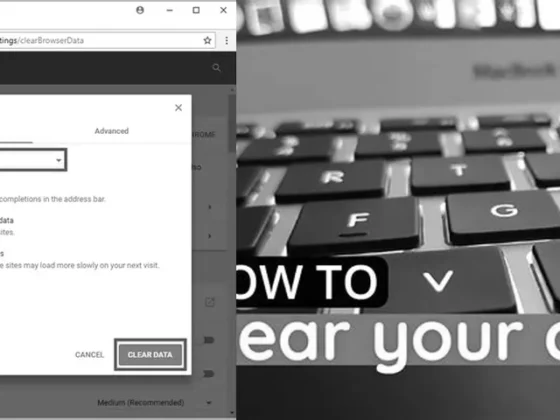Can You Use an SD Card as RAM on a Chromebook? – Are you tired of your Chromebook running out of memory? Wish you could give it a little boost without breaking the bank? Well, I’ve got some good news for you. Today, we’re going to explore the possibility of using an SD card as RAM on your Chromebook. Yes, you read that right – that tiny, portable storage device might just be the ticket to giving your Chromebook the memory upgrade it so desperately needs. So, grab your SD card and let’s dive into the world of Chromebook storage and memory.
Understanding RAM and Storage in Chromebooks
The first step in addressing whether an SD card can act as RAM on a Chromebook is to understand the distinct roles of RAM (Random Access Memory) and storage in a computing device. RAM is a type of volatile memory that is used by the CPU to store data of running programs for quick access. Storage, on the other hand, refers to the capacity a device has to store data long-term, even when it’s powered off.
Distinguishing RAM from Storage
Chromebooks, like other computers, have a fixed amount of RAM which is used to run applications and manage the system’s operations. The RAM in Chromebooks is typically LPDDR4, a fast and energy-efficient type of memory. Conversely, eMMC storage in Chromebooks is akin to a built-in hard drive or SSD, where your apps, documents, photos, and other files are saved. It’s important to note that Chromebooks have soldered-in eMMC storage and LPDDR4 RAM, meaning neither can be physically upgraded by the end-user.
Is It Possible to Use an SD Card as RAM?
The short answer is no. An SD card cannot be used as RAM on a Chromebook or any other device. RAM and SD cards are fundamentally different in their architecture and purpose. While RAM is designed for speed and temporary data storage, SD cards are designed for slower, more permanent storage. Adding an SD card to a Chromebook will not solve RAM memory problems; it only solves storage problems for data files.
Expanding Chromebook Storage with SD Cards
Although you cannot increase your Chromebook’s RAM with an SD card, you can certainly expand its storage capabilities. Many Chromebook models come with a limited amount of internal storage, but they include a slot for an SD card, allowing you to increase the device’s storage capacity significantly.
Choosing the Right SD Card
When selecting an SD card for your Chromebook, you should consider the maximum capacity it supports, which can vary by model. Typically, Chromebooks can handle SD cards with up to 256GB of storage. This additional space is perfect for storing large files like homework, projects, photos, and videos.
How to Use an SD Card on Your Chromebook
To use an SD card as an extension of your Chromebook’s internal storage, simply insert it into the SD card slot. Once recognized by the system, it allows access to all files from any app or Chromebook operation. It acts as a seamless extension of the Chromebook’s storage capabilities.
Ejecting the SD Card Safely
It is crucial to eject the SD card before physically removing it from your Chromebook to prevent data loss or corruption. This can be done by clicking the “eject” icon next to the SD card’s listing in the file manager before pulling it out of the slot.
Alternative Uses for SD Cards and USB Drives
Beyond storage expansion, Chromebooks offer the flexibility to boot from external devices like USB drives and SD cards. This feature is particularly useful for developers, IT professionals, or individuals who need to run alternative operating systems or specialized software.
Booting from an SD Card in Developer Mode
To enable booting from an SD card, you must first switch your Chromebook into Developer Mode. This mode loosens the default security constraints and allows more technical users to tinker with the inner workings of the device. Once in Developer Mode, you can set your Chromebook to boot from a USB drive or an SD card, provided the external media has a bootable version of an operating system.
Final Thoughts on Chromebook Storage and Memory
While it’s not possible to use an SD card as RAM on a Chromebook, SD cards serve as a valuable tool to expand storage space. This is essential for users who manage large files or prefer to keep a substantial media library on hand. Although the internal RAM and storage of a Chromebook are not upgradeable, understanding and utilizing external storage options like SD cards can significantly enhance your Chromebook’s functionality.
Navigating the Limitations
Understanding the limitations of your Chromebook’s hardware is essential for making the most of its capabilities. By leveraging external storage options and familiarizing yourself with features available in Developer Mode, you can tailor your Chromebook’s performance to better suit your needs, within the confines of its built-in RAM and storage specifications.
In conclusion, while you cannot replace or supplement the RAM on a Chromebook with an SD card, you can certainly expand your storage possibilities to ensure your Chromebook continues to serve you well in all your computing tasks.
FAQ & Related Questions about Using a SD Card as RAM on Chromebook
Q: Can I use a SD card as RAM on a Chromebook?
A: No, adding an SD card to a Chromebook will not solve RAM memory problems. SD cards can only be used to solve storage problems for data files.
Q: Can a Chromebook boot up from an SD card?
A: Yes, if the option is enabled in Developer Mode, a Chromebook can boot up from an SD card or a USB drive.
Q: Can I use a SD card as a hard drive on a Chromebook?
A: Yes, the SD card will be treated as an extension of your Chromebook’s internal storage. You will be able to access all of your files from any app or Chromebook.
Q: What is the maximum storage capacity of an SD card for a Chromebook?
A: The maximum storage capacity for an SD card on a Chromebook is up to 256GB. This allows you to easily add enough storage for your homework, projects, photos, videos, and more.
Q: Can I upgrade the RAM on a Chromebook?
A: No, Chromebooks have soldered-in eMMC storage and LPDDR4 RAM, so the RAM cannot be upgraded.


